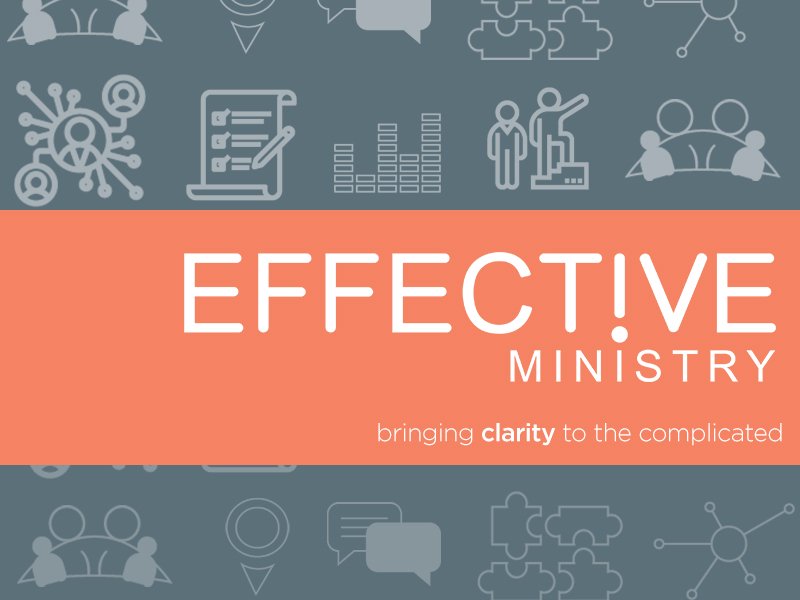Nehemiah and the Great Resignation
The term “Great Resignation” is getting lots of play these days—blogs, webinars, workshops, social media, etc. As those who serve in Christian leadership, it’s probably best to see what Scripture has to say.
Perhaps one of the greatest examples of visionary leadership in Scripture, Nehemiah is my go-to book when young leaders ask me for advice on aligning and motivating their teams.
Even though it’s been 2,500 years, he had his own experience with the Great Resignation! Let’s see how he handled it.
It all began with a powerful, compelling vision from God!
Nehemiah 1:3 says: “The remnant there in the province who had survived the exile is in great trouble and shame. The wall of Jerusalem is broken down, and its gates are destroyed by fire.”
As pastors and church leaders, you may be feeling a bit like that yourselves right now.
Nehemiah 2:17-18 goes on to say: Then I said to them, “You see the trouble we are in, how Jerusalem lies in ruins with its gates burned. Come, let us build the wall of Jerusalem, that we may no longer suffer derision.” And I told them of the hand of my God that had been upon me for good, and also of the words that the king had spoken to me. And THEY said, “Let us rise up and build.” So they strengthened their hands for the good work.
And they’re off! Everyone is on board with the mission and the vision! They have their roles and responsibilities clearly laid out, they are working in harmony, they are making huge progress.
Chapter four, verse 6 then says: So we built the wall. And all the wall was joined together to half its height, for the people had a mind to work.
Compelling vision, clear direction, dedicated team. A case study in organizational leadership and effective management. Right?
Then, verses 10 – 12:
- “The strength of the laborers is giving out, and there is so much rubble that we cannot rebuild the wall.”
- Our enemies said, “Before they know it or see us, we will be right there among them and will kill them and put an end to the work.”
- Then the Jews who lived near them came and told us ten times over, “Wherever you turn, they will attack us.”
- FULL STOP! -
The team sat down. Many complained, some left, all were disengaged.
Nehemiah would not have won the award for “Best Christian Workplace” —Circa 444 B.C.
What happened? How did Nehemiah regain the hearts and hands of the team, create momentum and complete one of the most daunting missions in biblical history?
Here’s how I believe it stacked up.
- - He listened to his team.
- - He created safety.
- - He resourced them with the tools they needed.
- - He recast the vision by pointing them to faith in a very big God!
1. Listen to them:
“The strength of the laborers is giving out, and there is so much rubble that we cannot rebuild the wall.”
The team is weary because they keep tripping, stumbling over and navigating around rubble. What is the rubble? THE OLD WALL!
What was once a symbol of their safety, their hope, their identity was the very thing keeping them from accomplishing the new vision!
Have an honest conversation with your team and your leaders. What are they tripping on, or stumbling over?
The “way we’ve always done it” doesn’t work anymore. Identify those things and then… TAKE OUT THE TRASH! Get rid of it! If you don’t clear the rubble, they will leave.
“And our enemies said, “They will not know or see till we come among them and kill them and stop the work.” “So, I stationed some of the people behind the lowest points of the wall at the exposed places, posting them by families, with their swords, spears and bows.”
What are the fears and concerns your team is facing individually and collectively? Hear them, address them. And even if you don’t agree or understand, help them feel understood and protected. If they do not feel safe, they will leave.

“From that day on, half of my men did the work, while the other half were equipped with spears, shields, bows and armor. The officers posted themselves behind all the people of Judah who were building the wall. Those who carried materials did their work with one hand and held a weapon in the other, and each of the builders wore his sword at his side as he worked.”
Determine what each team member needs to improve their performance. Goals, training, books, classes, structure, encouragement, rewards. This is not a “one size fits all” approach. Learn your team, get to know them individually and provide the specific tools each one needs to grow in their effectiveness and on their discipleship journey. If you don’t, they will leave.
4. Re-Vision them:
“Don’t be afraid. Remember the Lord, who is great and awesome, and fight for your families, your sons and your daughters, your wives and your homes.” …we all returned to the wall, each to our own work.
It’s been a challenging few years. Many things have changed. You’ve walked around the entire wall and you can see the progress, even if it’s less than you’d hoped for.
Your team and fellow leaders have been down in the mud making and stacking bricks, one by one. They are tired, confused, scared, covered in dirt and not sure if what they are doing is making any difference at all!
Help your team stand up and see the height, depth and strength of what they are building. Provide the tools they need to adjust to the new realities of life, ministry and mission.
Conclusion: Celebrate the faithfulness of God
The entire wall was rebuilt in 52 days! The wall was approximately 4 miles long and most estimates put it at 15 feet thick!
Chapter 8 – The “after party” (a paraphrase from The Message)
Then all the people gathered as one person in the town square in front of the Water Gate and asked the scholar Ezra to bring the Book of The Revelation of Moses thatGod had commanded for Israel.
So Ezra the priest brought The Revelation to the congregation, which was made up of both men and women—everyone capable of understanding. And all the people listened—they were all ears.
Every eye was on him and as he opened the book everyone stood. Then Ezra praisedGod, the great God, and all the people responded, “Oh Yes! Yes!” with hands raised high. And then they fell to their knees in worship ofGod, their faces to the ground.
Pastor, you and your church are called and compelled by a great vision. But, God is greater than your vision. Be sure that the faith, hope, commitment and ministry effectiveness you are instilling (and requiring) of your team is rooted in God not you, not your church.
Take these action steps this month:
- Take a moment right now and schedule a time with your team to listen.
- Determine ways you can help create safety and protection for them.
- Resource them with the tools they need to grow and succeed.
- Help them understand the new vision for the season you are in.
- Celebrate God’s faithfulness as a team.
Doing these things will not necessarily stem the Great Resignation entirely but it will mitigate much of it and build a strong, healthy team that is unified and on mission!
Now, go build (and retain) an amazing team, and watch God’s vision for your church become a reality!
At Generis, we believe that generous churches are, above all, healthy churches. If you believe your team could be healthier and more effective but are unsure how to get there, we would love to assist you.
Connect with us today at: generis.com/get-started
Connect with Jon Wright
Executive Pastor Strategist

Staff transitions can sometimes be difficult or awkward to navigate. How can we be honoring to others as they transition off of our staff while still maintaining the integrity and health of our ministry team?
This Resource Will:
- Help you understand why transitions are healthy and needed.
- Communicate a clear philosophy and process around transition.
- Provide practical and applicable tools to maintain a healthy staff culture regardless of transitions.
- And much more.
Share this
You May Also Like
These Related Stories

Uncovering Lids on Generosity

Bringing Clarity to the Complicated





No Comments Yet
Let us know what you think